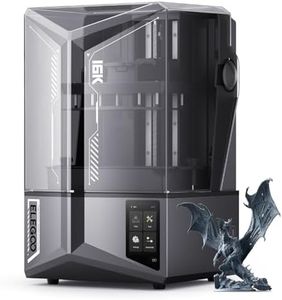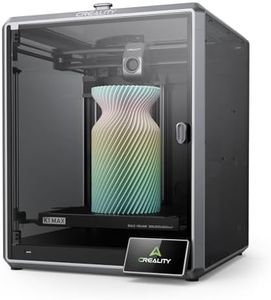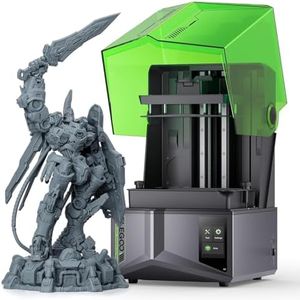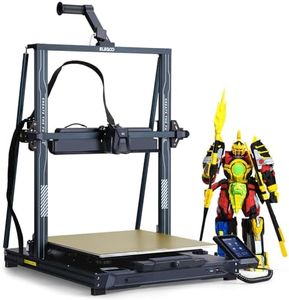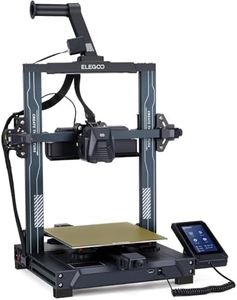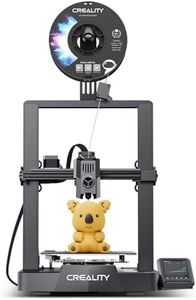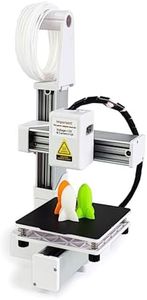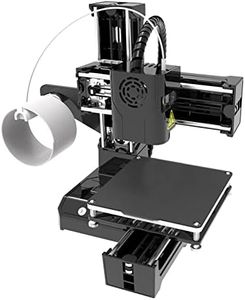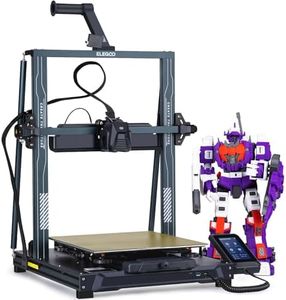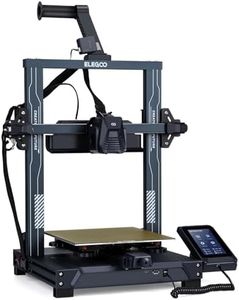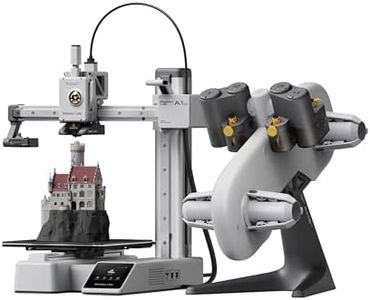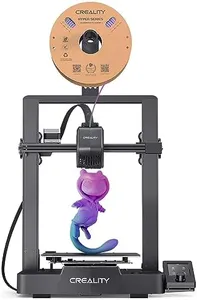We Use CookiesWe use cookies to enhance the security, performance,
functionality and for analytical and promotional activities. By continuing to browse this site you
are agreeing to our privacy policy
10 Best Home 3d Printers
From leading brands and best sellers available on the web.Buying Guide for the Best Home 3d Printers
When choosing a home 3D printer, it's helpful to think about what you want to create, your experience level, and how much time you are willing to spend learning and maintaining the printer. The world of 3D printing is diverse and can seem overwhelming at first, but by focusing on key specifications, you'll be able to narrow down your options and find a machine that meets your personal needs.Print TechnologyThis refers to the process the printer uses to create objects. The most common types for home use are FDM (Fused Deposition Modeling) and SLA (Stereolithography). FDM printers are generally easier to manage, use plastic filaments, and are better for larger parts. SLA printers use resin and can produce finer details, but usually require more post-processing and careful handling. If you're new or printing larger/basic items, FDM is a good starting point. If you want high detail for things like miniatures, consider SLA.
Build VolumeBuild volume is the maximum physical size of an object you can print in a single job, typically given in length x width x height (e.g., 200 x 200 x 200 mm). Smaller volumes take up less space and use less material but limit the size of what you can make. Larger volumes allow more ambitious projects but need more space and can make printers heavier or costlier. Pick a build volume that matches the things you want to create most often; for simple home use, medium-sized volumes suit most users.
Layer ResolutionLayer resolution indicates how thin each layer of your printed object will be, signaled in microns (µm). Lower numbers mean finer detail (e.g., 50 µm), while higher numbers are less detailed but print faster (e.g., 300 µm). If you prioritize smooth surfaces and intricate details, choose a printer with lower minimum layer heights. For basic models or large prototypes, higher layer heights will be sufficient and save time.
Material CompatibilityThis tells you which materials the printer can use, like PLA, ABS, PETG, or special filaments. Some printers work with only a few types, while others support many materials, which gives you more flexibility. If you plan on experimenting or need tough materials, look for a printer that’s compatible with multiple common filaments. Beginners often start with PLA because it’s easy to print and not too demanding.
Ease of UseEase of use covers features such as touchscreen controls, automatic bed leveling, and easy-to-load filaments. Some printers come nearly ready to use, while others need more assembly and adjustments. If you are new to 3D printing or want a hassle-free experience, look for models that highlight beginner-friendly features and require less manual setup.
Print SpeedPrint speed is how fast the printer works, usually measured in millimeters per second. Higher speeds mean you get your objects faster, but printing too quickly can reduce quality. If you need high detail or want flawless prints, a printer with a lower, consistent speed is preferable. If you plan to quickly prototype objects or don't mind rougher finishes, higher speeds might be useful.
Connectivity OptionsThis specifies how you can send your designs to the printer—USB, SD card, Wi-Fi, or direct cable connection. More options offer greater flexibility, especially if you want to print remotely or have limited access to a computer. Consider your home setup; wireless features are convenient if the printer will be far from your computer.
Community and SupportA strong user community and reliable support make it much easier to solve problems and learn. Some brands have big user forums or offer good customer service. If you are new to 3D printing or want ongoing help, look for brands or products with active communities and detailed tutorials.
